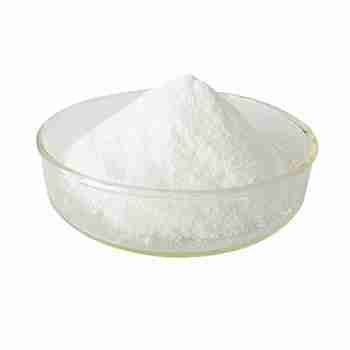Oxytetracycline hydrochloride cas 2058-46-0
Assay: 95.0%??C 102.0%
Appearance: yellow crystalline powder
Package: 25kg ?Paper?barrel
Sample: Available
related documents:
COA Of Oxytetracycline hydrochloride cas 2058-46-0
TDS of Oxytetracycline hydrochloride cas 2058-46-0
Request for product documents
发送询盘
Description
Oxytetracycline hydrochloride
Oxytetracycline hydrochloride quick details
Product?Name:?Oxytetracycline hydrochloride
CAS No:?2058-46-0
Molecular Formula:? C22H25ClN2O9
Molecular Structure:
MW: 496.89
Oxytetracycline hydrochloride typical propeity
Item
Specification
APPEARANCE
Should be yellow crystalline powder,hygroscopic
Solubility
?
Should be freely soluble in water, sparingly soluble in ethanol.Solutions in water become turbid on standing,owing?to the precipitation of oxytetracycline.
pH
2.3 ?C?2.9
Specific absorbance
270nm-?290nm
Specific rotation
-188??-200??
Light absorbing impurities
Absorption at 430nm shall not be more than?0.50
A (0.2%,1cm,430nm)<0.50
Absorption at 490nm shall not be more than?0.20
A (1%,1cm,490nm)<0.20
Heavy metals
???50 ppm
Water
???2.0%
Sulfated ash
???0.5%
Assay
95.0%?to 102.0%
?
Oxytetracycline hydrochloride Usage
Is a broad-spectrum antibiotic, its antibacterial spectrum antibacterial principle and tetracycline basically the same
Oxytetracycline hydrochloride Package
25kg ?Paper?barrel
Oxytetracycline hydrochloride Storage
Store in a cool, dry place. Do not store in direct sunlight. 0-6??C
| 5 |
|
0 |
| 4 |
|
0 |
| 3 |
|
0 |
| 2 |
|
0 |
| 1 |
|
0 |
- 2
- 2-diallylpent-4-en-1-amine
- 4
- 95-16-9
- Ammonium sulfamate
- Benzothiazole
- cas:67889-00-3ح2
- cas:83524-75-8 | pigment black 32
- cas:928836-00-4 | 2
- cas:932745-70-5 | 4
- Chemical Minerals
- Coconut diethanolamide
- Daily Chemicals
- discount
- for sale
- General pvc resin
- hexyl D-glucoside
- in stock
- Lauramidopropyl betaine
- LAURIC ACID MONOETHANOLAMIDE
- Petroleum Additives
- Plasticiser
- Ploymers
- price
- PVC
- quotation
- Raw Materal
- Remove term: Petroleum Additives Petroleum Additive
- SODIUM ETHYL 2-SULFOLAURATE
Related Products
Chemical Name: Sultamicillin
CAS No.: 76497-13-7
Appearance:?White powder
Assay??99.0%
Product name:HYDROXYPROPYL GUAR HYDROXYPROPYLTRIMONIUM CHLORIDE
Purity:99%
Appearance:Light Yellow Powder
Package:Customized according to customer needs.
Sample:Available
Chemical Name: STODDARD SOLVENT
CAS No.: 64742-88-7
Appearance: Colorless or Light Yellow Liquid
Chemical Name: Semaglutide
CAS No.: 910463-68-2
Molecular Formula: C187H291N45O59
Molecular Weight: 4113.57754
Appearance: Powder
Chemical Name:?Favipiravir
CAS No.:?259793-96-9
Molecular Fomula:?C5H4FN3O2
Molecular weight:?157.1
Appearance:?Off white solid
Assay: 99 % min
Levodopa, also known as L-DOPA or 3,4-dihydroxy-L-phenylalanine, is a naturally occurring amino acid and a critical precursor in the biosynthesis of the neurotransmitters dopamine, norepinephrine, and epinephrine. With the molecular formula C9H11NO4, levodopa is a large, neutral amino acid that plays a significant role in the treatment of Parkinson’s disease due to its ability to cross the blood-brain barrier and be converted into dopamine.
Chemically, levodopa is synthesized from the precursor amino acid tyrosine through the action of the enzyme tyrosine hydroxylase. As a medication, levodopa is often formulated with a peripheral DOPA decarboxylase inhibitor to reduce its conversion to dopamine outside the brain, thereby increasing its effectiveness and reducing side effects.
Levodopa is characterized by its effectiveness in alleviating the motor symptoms of Parkinson’s disease, such as tremors, rigidity, and bradykinesia. It is typically administered orally and absorbed from the gastrointestinal tract, where it is then transported to the brain.
In summary, levodopa is a vital pharmaceutical compound used in neurology for its role in treating Parkinson’s disease by replenishing the brain’s dopamine levels. Its targeted delivery and conversion to dopamine make it an essential treatment option for managing the motor symptoms associated with this condition.
Levodopa, also known as L-DOPA or 3,4-dihydroxy-L-phenylalanine, is a naturally occurring amino acid and a critical precursor in the biosynthesis of the neurotransmitters dopamine, norepinephrine, and epinephrine. With the molecular formula C9H11NO4, levodopa is a large, neutral amino acid that plays a significant role in the treatment of Parkinson’s disease due to its ability to cross the blood-brain barrier and be converted into dopamine.
Chemically, levodopa is synthesized from the precursor amino acid tyrosine through the action of the enzyme tyrosine hydroxylase. As a medication, levodopa is often formulated with a peripheral DOPA decarboxylase inhibitor to reduce its conversion to dopamine outside the brain, thereby increasing its effectiveness and reducing side effects.
Levodopa is characterized by its effectiveness in alleviating the motor symptoms of Parkinson’s disease, such as tremors, rigidity, and bradykinesia. It is typically administered orally and absorbed from the gastrointestinal tract, where it is then transported to the brain.
In summary, levodopa is a vital pharmaceutical compound used in neurology for its role in treating Parkinson’s disease by replenishing the brain’s dopamine levels. Its targeted delivery and conversion to dopamine make it an essential treatment option for managing the motor symptoms associated with this condition.
Chemical Name:?Tebipenem pivoxil
CAS No.: 161715-24-8
Molecular Formula: C22H31N3O6S2
Molecular Weight: 497.63
Chemical Name: Imazalil Sulfate
CAS No.: 58594-72-2
Molecular Formula: C14H14Cl2N2O.H2SO4
Molecular Weight: 395.26
Appearance: Solid
Chemical Name: Arabic gum
CAS No.: 9000-01-5
Appearance: powder
Chemical Name: Tylosin tartrate
CAS No.:?74610-55-2
Appearance:?white powder
Assay????98.0%
Chemical Name: Potassium Castorate
CAS No.: 8013-05-6
Molecular Formula: C57H107K3O12
Molecular Weight: 1101.74718
Appearance: Yellow Liquid


















Reviews
There are no reviews yet.